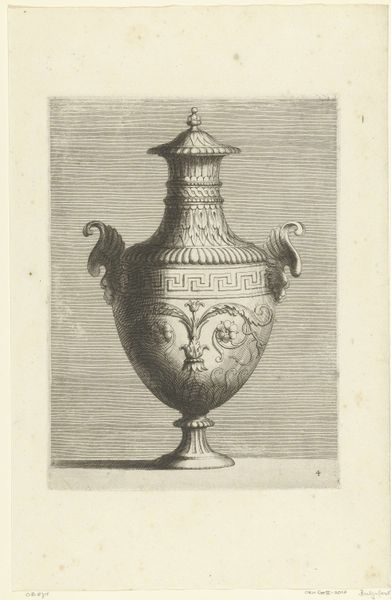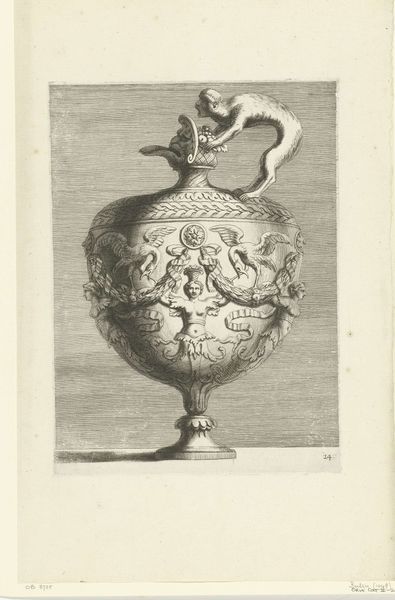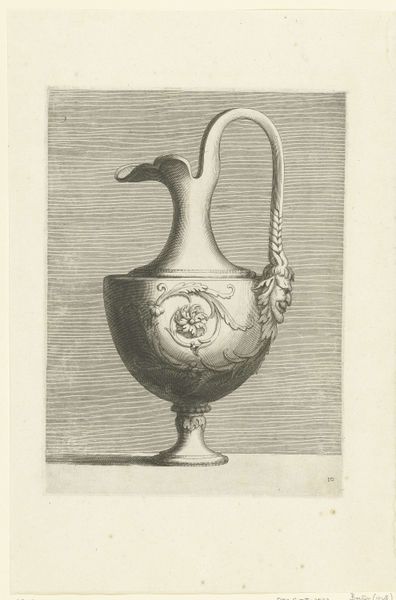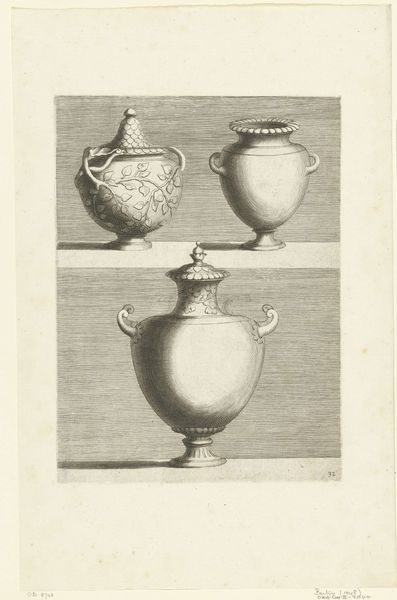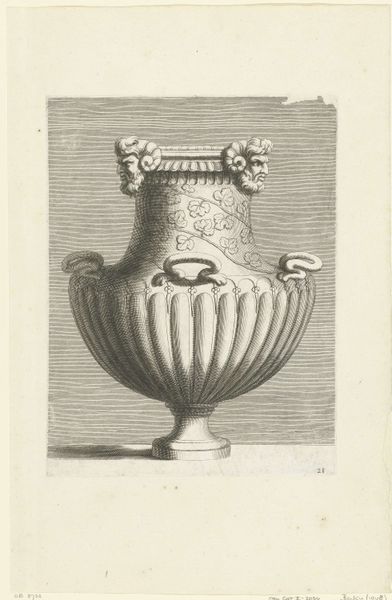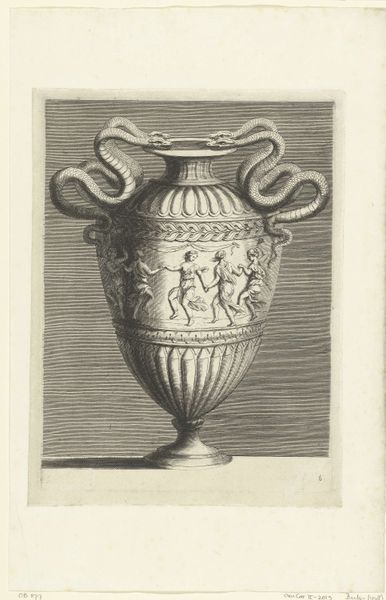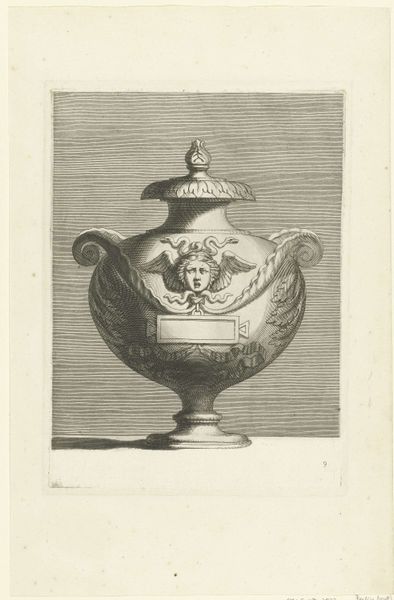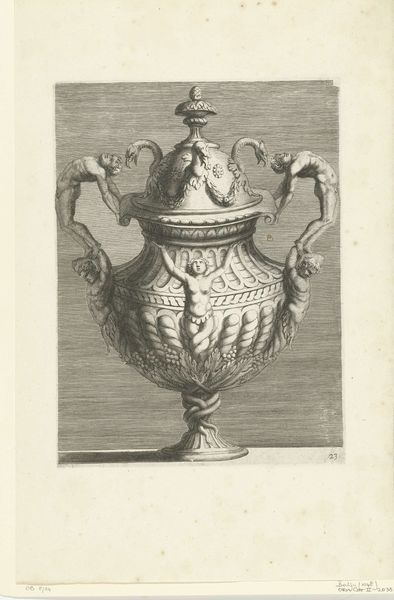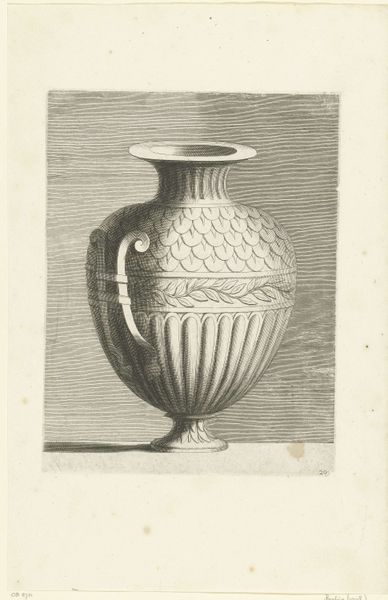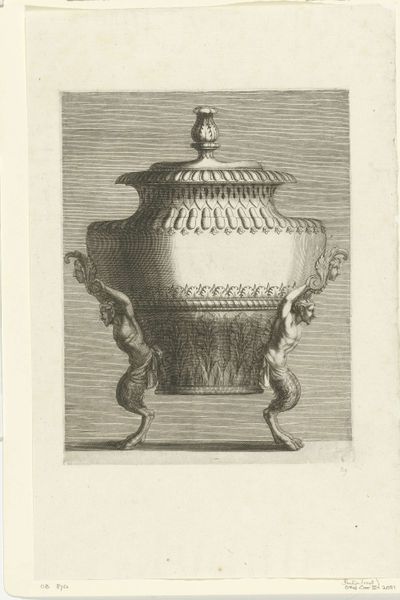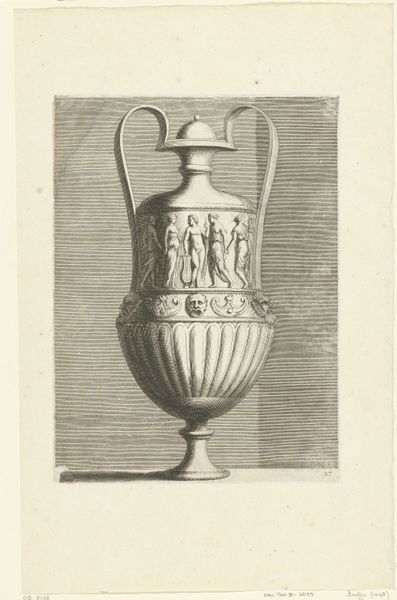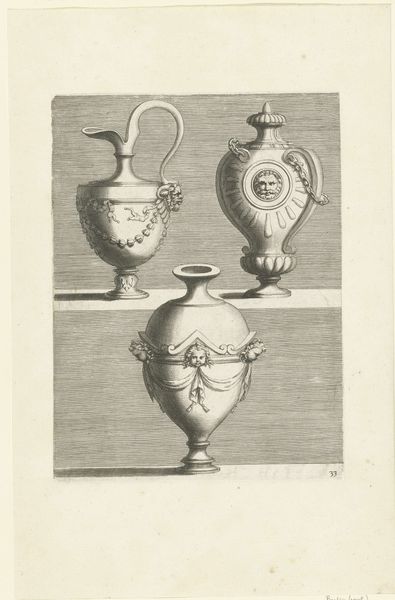
print, engraving
#
baroque
#
dutch-golden-age
# print
#
form
#
line
#
engraving
Dimensions: height 274 mm, width 204 mm
Copyright: Rijks Museum: Open Domain
Curator: Oh, how wonderfully strange! It feels like looking into the dreams of a long-lost goldsmith. The object radiates an almost melancholy beauty, don't you think? Editor: Absolutely. What we're seeing is a print—an engraving—titled "Schenkkan met bladeren om de hals," which translates to "Jug with Leaves around the Neck". It dates back to 1657, placing it firmly in the Dutch Golden Age. Curator: That explains the refined details. The way the light seems to catch the metallic surfaces and trace the subtle curves is incredible, I am obsessed with the decorative elements such as the leaves and the small human head figure. They give the piece a very specific kind of baroque flair. Editor: True, that ornamental style was dominant then, although in the Dutch context, baroque often took on a more restrained and bourgeois character. It reflects a society navigating the complexities of wealth and status through very codified objects like this one. Curator: I hadn't really thought about it in terms of societal values, but the image holds a certain aloofness, doesn't it? It isn't showing a casual jug in use, is about formality. This must have been an expensive piece that spoke of abundance and power. It would have been displayed. It feels powerful, doesn't it? Editor: That's a pertinent observation, this type of visual language—an ornamental display for exclusive viewing—can be exclusionary. Curator: In contrast to many paintings of the Golden Age, though, with intimate genre scenes or boisterous portraits, this still life, stripped of colour, feels detached from daily human dramas. The print maker, Françoise Bouzonnet, chose to offer form rather than context, right? Editor: Precisely! Through engravings like this, luxury objects transcended their original settings, entering the collections and studies of those who might never afford them, this is not a coincidence but a way of shaping class structure! And consider the perspective too—are we, the viewers, admiring owners, aspiring owners, or excluded bystanders? These visual representations certainly played an active role in negotiating social imaginaries. Curator: Hmm, that shifts my perception of this, I do get carried away by pretty lights and shapes. It’s a looking glass, actually, into past aesthetics, economies, and ideologies. Editor: Exactly. It pushes us to recognize the power relations inherent to visual media and the consumption of images. A jug can represent the world. Curator: Well, after that eye-opener, I don’t think I’ll ever look at another simple print the same way. I need some time to reflect and go see a documentary about class society, I believe! Editor: Agreed. Every artwork whispers stories of its time if you lend a careful ear... and a critical lens.
Comments
No comments
Be the first to comment and join the conversation on the ultimate creative platform.
